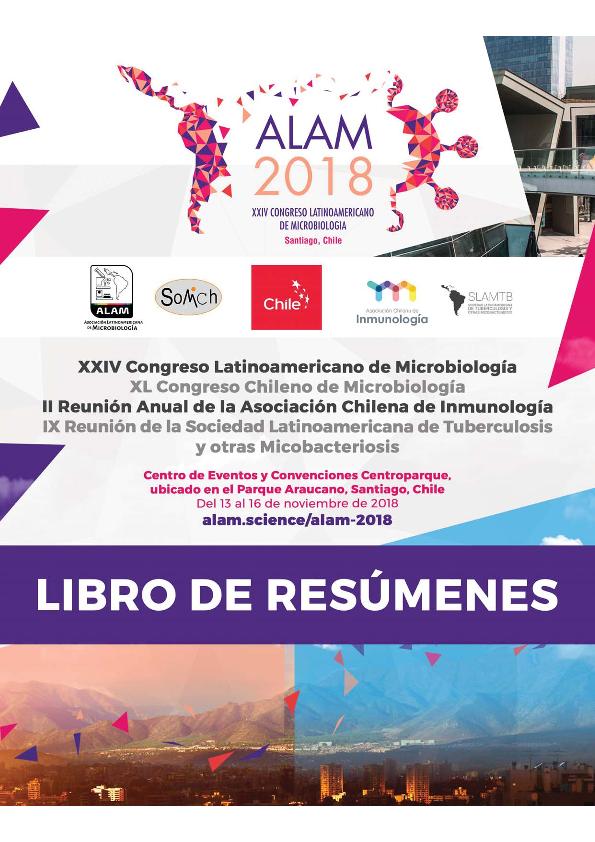Mostrar el registro sencillo del ítem
dc.contributor.author
Mendoza, Julián I.
dc.contributor.author
Checa, Susana Karina

dc.date.available
2021-04-07T19:11:52Z
dc.date.issued
2019
dc.identifier.citation
The metal-binding loop size defines proper ion-ligand interaction and signal transduction in CueR-like sensors; XXIV Congreso Latinoamericano de Microbiología. XL Congreso Chileno de Microbiología. II Reunión Anual de la Asociación Chilena de Inmunología. IX Reunión Anual de la Sociedad Latinoamericana de Tuberculosis y otras Microbacteriosis; Santiago de Chile; Chile; 2018
dc.identifier.uri
http://hdl.handle.net/11336/129564
dc.description.abstract
Bacteria resistance to toxic transition metals depends on transcriptional regulators that detect the metal ion and activate the expression of factors that remove or neutralize the harmful species, restoring homeostasis. Our group is focus on metallo-regulators of the MerR family, dimeric proteins that interact with toxic ions in the cytoplasm and modify the promoter conformation to enhance recognition by the RNA polymerase. The ability of MerR proteins to discriminate between metals is essential to achieve a proper response to a specific stress, and depends mainly on the array of specific ligand (cysteine or histidine residues) at the metal coordination environment. Based on these key residues, two groups can be distinguished: one including members that recognize Cu(I), Ag(I) or Au(I), and the other that interact with divalent ions such as Zn(II), Pb(II), Cd(II) or Hg(II). While most of these sensors are poorly selective, like the ancestral CueR or ZntR sensors, some evolved to achieve preferential recognition to one specific metal ion, such as GolS, the Au(I)-sensor from Salmonella. Previously, we demonstrated that two residues within α5-α6 metal-binding loop (MBL) of GolS favor Au(I)-sensing over Cu(I) or Ag(I). To analyze the contribution of the MBL to the evolution of monovalent and divalent metal sensors, we applied site-directed mutagenesis and domain swapping to generate a set of GolS, CueR and ZntR variants with modifications in both the size and the identity of residues composing MBL. The functionality of these mutant sensors was investigated by assessing the activation of specific reporter genes followed by in silico modelling. The results obtained indicate that the size of the MBL is optimized in most sensors to allow the adequate arrangement of ligands in order to improve the interaction with the inducer metals. Some CueR variants also modified the pattern of metal specificity, lowering their affinity for some of their original inducers while keeping parental response to others. Our results highlight the relevance of other regions outside the MBL of CueR for adequately driving the inductor signal to the distal DNA-binding region and activate the transcription of their target genes.
dc.format
application/pdf
dc.language.iso
eng
dc.publisher
Asociación Chilena de Microbiología
dc.rights
info:eu-repo/semantics/openAccess
dc.rights.uri
https://creativecommons.org/licenses/by-nc-sa/2.5/ar/
dc.subject
METALS
dc.subject
TRANSCRIPTIONAL REGULATION
dc.subject
METALLOPROTEIN
dc.subject
MERR REGULATOR
dc.subject.classification
Bioquímica y Biología Molecular

dc.subject.classification
Ciencias Biológicas

dc.subject.classification
CIENCIAS NATURALES Y EXACTAS

dc.title
The metal-binding loop size defines proper ion-ligand interaction and signal transduction in CueR-like sensors
dc.type
info:eu-repo/semantics/publishedVersion
dc.type
info:eu-repo/semantics/conferenceObject
dc.type
info:ar-repo/semantics/documento de conferencia
dc.date.updated
2020-12-02T19:13:33Z
dc.journal.pais
Chile

dc.journal.ciudad
Santiago de Chile
dc.description.fil
Fil: Mendoza, Julián I.. Consejo Nacional de Investigaciones Científicas y Técnicas. Centro Científico Tecnológico Conicet - Rosario. Instituto de Biología Molecular y Celular de Rosario. Universidad Nacional de Rosario. Facultad de Ciencias Bioquímicas y Farmacéuticas. Instituto de Biología Molecular y Celular de Rosario; Argentina
dc.description.fil
Fil: Checa, Susana Karina. Consejo Nacional de Investigaciones Científicas y Técnicas. Centro Científico Tecnológico Conicet - Rosario. Instituto de Biología Molecular y Celular de Rosario. Universidad Nacional de Rosario. Facultad de Ciencias Bioquímicas y Farmacéuticas. Instituto de Biología Molecular y Celular de Rosario; Argentina
dc.relation.alternativeid
info:eu-repo/semantics/altIdentifier/url/https://alam.science/wp-content/uploads/2019/01/Libro-de-Res%C3%BAmenes-ALAM2018.pdf
dc.conicet.rol
Autor

dc.conicet.rol
Autor

dc.coverage
Internacional
dc.type.subtype
Congreso
dc.description.nombreEvento
XXIV Congreso Latinoamericano de Microbiología. XL Congreso Chileno de Microbiología. II Reunión Anual de la Asociación Chilena de Inmunología. IX Reunión Anual de la Sociedad Latinoamericana de Tuberculosis y otras Microbacteriosis
dc.date.evento
2018-12-13
dc.description.ciudadEvento
Santiago de Chile
dc.description.paisEvento
Chile

dc.type.publicacion
Book
dc.description.institucionOrganizadora
Asociación Latinoamericana de Microbiología
dc.source.libro
Libro de Resúmenes ALAM 2018
dc.date.eventoHasta
2018-12-16
dc.type
Congreso
Archivos asociados
